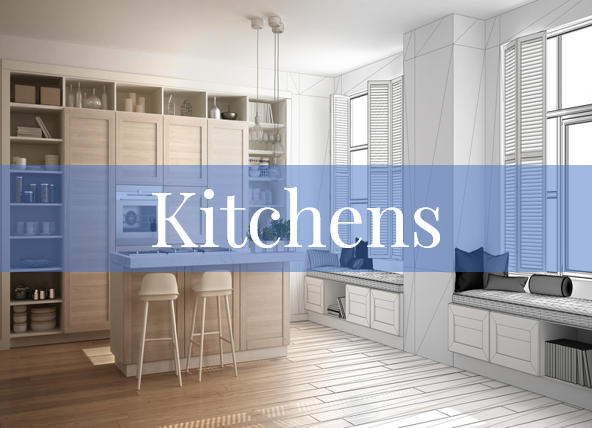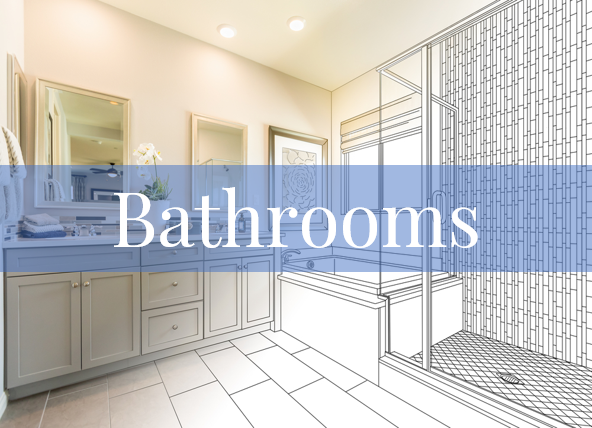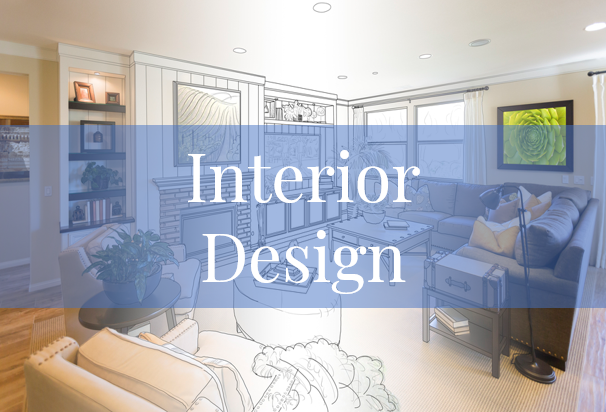How to Use Exterior Lighting Around Your Home
/What your home looks like at night should be just as important as what it looks like in daylight. Having the proper exterior lighting will accent the architectural features of your house, provide some passive security, and illuminate pathways, back yards, and entryways. The right lighting will also enhance your home's curb appeal. We're going to talk about some different options for exterior lighting and show you how effective outdoor lighting will make your home feel more warm, safe, and welcoming.
Prefer to listen?
Types of Lighting
Task lighting (increased light for a specific task) should be your most important lighting focus for the exterior of your home. This involves illuminating entrances and pathways for safety. Once these areas are properly lit, you can safely get inside your home, as you will easily see where you are walking. This also adds an element of security by discouraging burglars from entering homes that are well lit.
Once you have ensured that your task lighting is set, you can add elements of decorative lighting as well. Very often, decorative lighting will serve a double purpose as task lighting as well. For example, you can often install lights right into the concrete or wooden steps leading to your entrances. For the most part, these are decorative, but they also serve to light up the stairs you will be climbing to get in or out of your home.
When it comes time to select the light fixtures to install in your home, always keep in mind the size and scale of your space. One of our clients asked us to come and remove the very small light fixtures they had at their front entrance and on the front of their garage. They brought out the fixtures they had purchased to replace them. They were huge—and I mean gigantic! They didn't even properly fit in the space. She saw them and loved the look of them without considering that they were way too large for the size of her house.
Wall-Mounted Fixtures
Your front entrance is perhaps the most important space for you to light up. The right lighting will enhance the curb appeal; it can help visitors find your home a little more easily, and if the front entrance is the main entrance that people use to get in and out of the house, it definitely adds a safety feature and security.
Most homes have wall-mounted light fixtures near the entrances as well as at the garage. If you've still got the original jam jar wall-mounted light fixtures at your entrances, putting in a larger wall-mounted lantern can make a huge difference. There are a large variety of lights available, including ones that are controlled by a motion sensor.
You can easily remove those outdated light fixtures and swap them out with new ones to make a big impact on the appearance of your home. If you know a little bit about electrical work, this is a simple DIY project. If you're uncertain, make sure you call in a Licensed Electrical Contractor to do the job right. Either way, it's relatively inexpensive and can make a huge impact on the appearance of your home.
If you don’t already have a light fixture at an entrance to your home, you will need to install a device box and switch and run cable to it. This will require an Electrical Safety Authority permit and is better left to be done by a Licensed Electrical Contractor. We always recommend that a good-quality light be installed at your front entrance, side entrance, and any rear exit, such as patio doors. It's even a good idea to have a quality light at the man-door entrance to your garage.
Post Lights
Adding a post light to your front yard or backyard can definitely brighten up your space. We recently installed two post lights for our client in Bowmanville. We installed one post light in the front yard, about halfway up the driveway. The second post light was installed in the backyard near the perimeter of their yard, in front of the garden. Those lights were put on a timer that was daylight-sensitive. The lights turned on after dusk and turned off at daybreak. This allowed them to have a constant source of light as they were coming into their driveway, and it gently lit up their front yard. In the backyard, it gave them just the right amount of light whenever they let their dog out at night to do his business.
The one thing to keep in mind about post lights is that they really need to be done during the warmer months. In order to install them properly and ensure they are secure, you need to dig a hole and fill it with concrete to set the post light in. If you live in a particularly cold climate, this isn't a job to be completed in January.
Pot Lights
Installing LED pot lights in the soffit of your home is a great way to add task lighting that lights up your walkways, and it also looks fabulous from the street. These lights are installed in the soffit, which is approximately 10 feet up in a bungalow or 16 to 30 feet up in a 2-story home. These lights are powerful enough to shine down and light up walkways and the front of the house.
The only real disadvantage of soffit lighting is that it tends to be a lot more expensive than other types of exterior lighting. This is definitely not a DIY project, and because of the height that these lights typically need to be installed at, the labour charges can be higher than just installing wall sconces.
Landscape Lighting
Landscape lighting can take on many different forms. It can be as simple as installing a post light in your backyard, spotlights that are directed at a particular feature such as a pond or a tree, step lights, which are the lights installed in your stairs, string lights, which are often installed around patio doors or strung through gazebos, and garden lights, which can be almost any type of light, including solar-powered lights, that are installed throughout your garden.
Although landscape lighting can add an element of task lighting, it is most often decorative or accent lighting. When deciding on the type of landscape lighting to include in your design, consider what you're using the space for and the type of mood or feeling you want to create there.
For example, if you host a lot of outdoor barbecues or parties, you'll want your landscape lighting to be subdued enough that it isn't overpowering yet central enough that it provides enough light for your guests to see what they are doing. Alternatively, if it's mainly just you and your immediate family that use the space, assuming you have enough task lighting throughout your backyard, landscape lighting can simply be a soft accent.
Maintaining Your Exterior Lighting
Although outdoor lights are designed to be outside and exposed to the elements, there are a few things you should do to maintain the longevity of your exterior lights.
Make sure you keep your fixtures free of leaves or any other debris. This will prevent the fixtures from overheating.
With the popularity of LED bulbs, it is very possible you'll never have to replace the light bulbs in your exterior fixtures. However, there are times when even LED bulbs will burn out.
When one of the bulbs in your exterior lighting has burned out, replace it immediately to prevent other lights on the circuit from having to take on the load, which can essentially shorten their lifespan.
Some Extra Tips for Getting the Lighting Just Right
Trees
Use uplighting, such as a flood light, and aim it at the trunk of the tree.
Use downlighting—place it up as high as you can in the tree, and if you are using 2, make sure the beams don’t cross.
Garden
Lights must be taller than the plants you’re placing them in. Place these lights at least twenty feet apart. This provides decorative pools of light to show off your garden.
Variety
Use a variety of different types of lighting in your front and back yards. Don't just get hung up on one type of lighting. For example, you can use wall sconces at your front entrance and garage, soffit lighting around the perimeter of your house, and flood lights to light up the tree in your backyard.
Colour of Light
Stick to warm lights as opposed to cool lights. Although I'm a huge fan of 4000K cool LED pot lights in the home as they light everything up brightly and look like daylight, at 8 p.m. in your backyard, you don't want your patio lit up like an airport runway. Your lights should provide enough lighting for safety and security, but otherwise they should still remain soft and warm.
Timer / Motion Sensor
I'm a big fan of using a timer or motion sensor for your exterior lights. I have my front door light set on a motion sensor. I never have to worry about whether I turned the front light on before I left the house, knowing I'm going to be returning after dark. As soon as I start to get out of my car and walk up the driveway, my front light comes on and guides me the rest of the way.
Another great option is to use a timer. I'm also a big fan of these because if you're going to go to the expense of putting effective lighting around your property, why not have it turn on when it’s dark and turn off in the morning? This is an extremely effective tool for deterring a potential break-in.
Durability
When you're shopping for your light fixtures, make sure you look for ones that are extremely durable and are built to withstand the elements. Look for ones that are wet rated and can stand up to wind, rain, and extreme temperatures.
If you live in the Durham Region area and are interested in the installation of some additional exterior lighting, give us a call at 905-259-3344 to have our Licensed Electrical Contractor install some beautiful task or accent lighting for you.
















